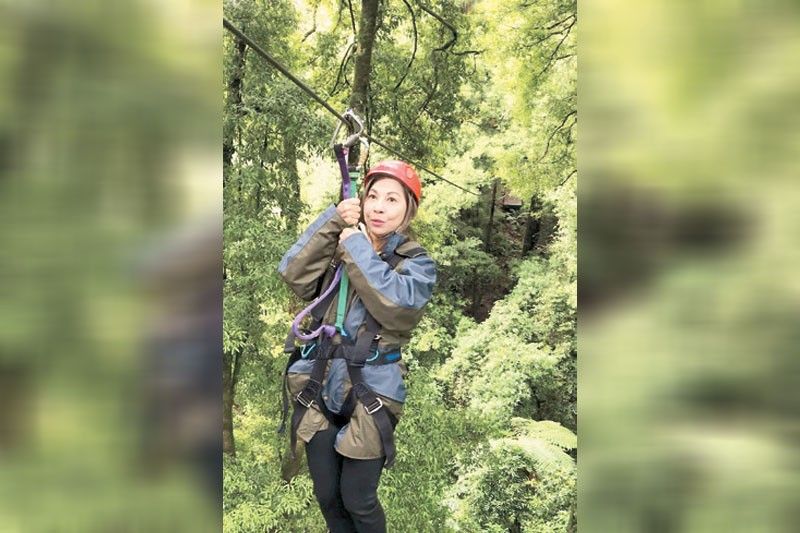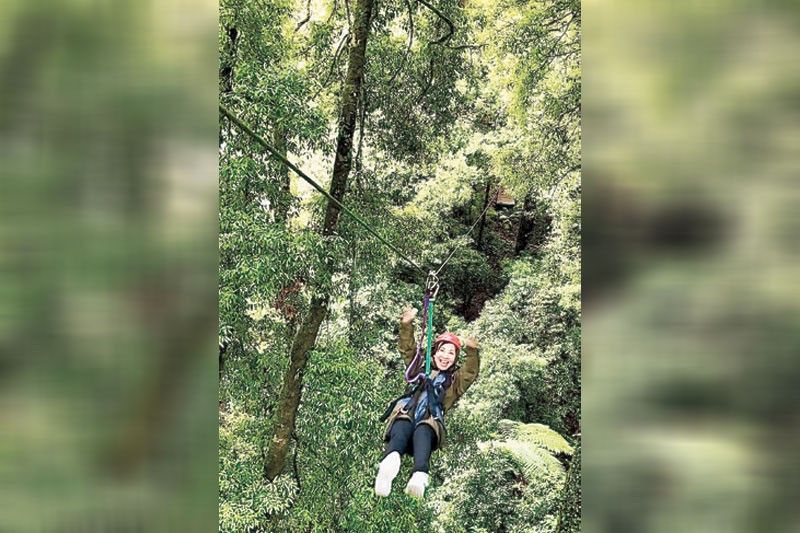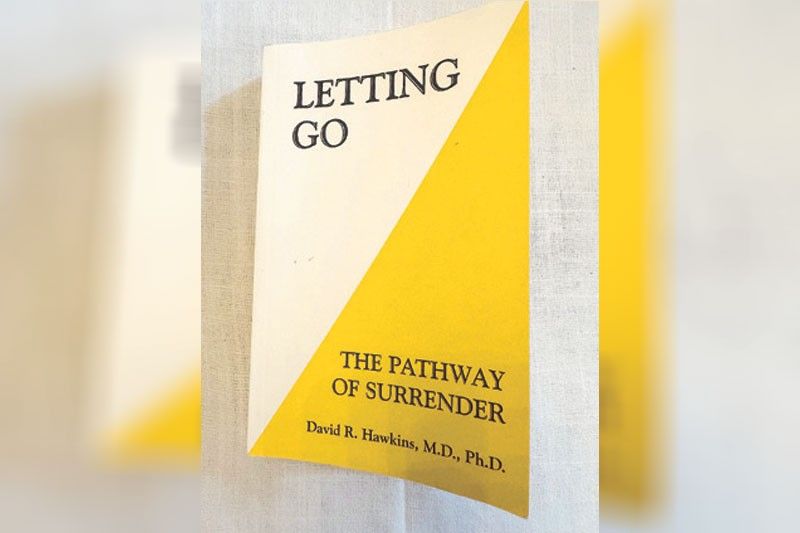When ‘surrendering’ is winning

Last week, my family and I spent an invigorating weekend on the beach. One clear day, we set out to sea to feed the fish, do some snorkeling and free diving.
Snorkeling has been one of the most liberating, awesome, and jaw-dropping experiences of my un-sporty life. The first time I tried snorkeling during a trip to El Nido in Palawan with my colleagues Büm D. Tenorio Jr. and Luis Espiritu Jr., we heard childlike shrieks of wonder and amazement — mine.
However, since the pandemic, I haven’t gone snorkeling again. So last, week, armed with goggles and a life vest with a floater beside me for good measure, I was ready to take the plunge yet again. My son and his fiancée, both of whom swim like fish, were already in the water, describing the myriad of fish keeping them company.
Sitting at the edge of the boat, feet dangling in the water, I was about to take the leap. But I froze.
***

Sayang. I still wonder what if…I made internal excuses. It’s been almost five years since I last sliced through the marine underworld. I have a weak ankle, and so on and so forth. Simply put, I chickened out.
But I have also learned that instead of saying, “I should have,” I should simply say, “Next time…”
I recently watched a movie where one sailor told another that he was afraid of the darkness of the deep.
“What lies beyond what we can see?” he asked worriedly.
“Just more water,” the other sailor answered nonchalantly but factually. Tama naman. It’s just more of the same.
Okay, next time. The seas await. They’re not drying up anytime soon, anyway.
***

One of the most successful women in the United States — if not the world — Philippine-born Sheila Lirio Marcelo, the youngest person to be given Harvard’s most distinguished alumnus award, gave me a book titled Letting Go: The Pathway of Surrender by David R. Hawkins, MD, PhD (published by Hay House Inc.). In her dedication, she told me this book has changed her life. And obviously for the better.
The co-founder and CEO of Proof of Learn, an education platform and founder of Care.com, an online marketplace for childcare, senior care, special needs care, tutoring, pet care and housekeeping, where she served as CEO and chairwoman, she also has defied stereotypes and is blind to glass ceilings. She was a wife and mother at 20, a woman of color, a member of the ethnic minority, so to speak. And yet she has used whatever choices she made as a pole vault to her dreams.
I have started reading the book — it is never too late to be a Sheila, and not just financially, but why not — and already, I find it liberating. According to the book’s blurb, “Letting Go” provides a mechanism for letting go of inner blocks to “happiness, love, joy, success, health and, ultimately, Enlightenment.”
It’s a self-help book that doesn’t baby you. Instead, it makes you understand why you don’t need to be babied. You just have to free yourself from the chains that keep you from soaring. Stop resisting. Let go.
I remember a trip to New Zealand in 2018 with Philippine Airlines, during which our activities included riding on a zipline from one giant tree to another in Rotorua. That morning, one of the members of our delegation, influencer David Guison, asked me, “Are you ready, Ms. J?”
I flashed him my widest smile and said, “I was born ready!”
Of course, it was a boast. I had never been on a zipline before. We were told that if you’re scared, you shouldn’t go last on the line or else you’d chicken out. We were seven and I think I went second and by the time we were poised for our next trip down the zipline to another tree, I was ready to be first.
One of the portions of the multi-trip zipline journey was to go down the zipline back facing the next stop. So you don’t actually see the deep forest and the ground about 22 meters below. People who watched the video of us in action thought it was easier than “flying” forward. Actually, going down the zipline with your face to the wind was easier. But by the time we zipped down the line with our backs rather than our faces forward, it was easy-peasy.

No, I hadn’t become a daredevil. But at that moment, I wanted to free myself from the shackles of memories of the days when I was a wallflower — the fat kid who couldn’t run fast enough, couldn’t toss a volleyball or who couldn’t dance the swing. I wanted to be part of the action, because this time, I could. I was fit. I was confident. And most of all, I didn’t want to be left behind.
There is a part of Hawkins’ book that tells us: “When we look at our lives, we will see the residual of past life crises which are still unresolved. Thoughts and feelings about the events tend to occur and color our perception, and we will note that they have disabled us in certain areas of life.”
The teasing I got during my awkward pre-teens gave me an inferiority complex. I tried to compensate with high grades. I think that was something I did right, for Hawkins says that there is a benefit in acknowledging the “hidden gift to it.”
“Every life experience, no matter how ‘tragic,’ contains a hidden lesson. When we discover and acknowledge the hidden gift that is there, a healing takes place,” he writes. In overcoming what I thought was a shortcoming, I aspired to be the best I could be in areas where I shone.
Of course, I wouldn’t call it “tragic” that I wasn’t the belle of my youth’s ball, or the fastest in a relay during a sports fest (I preferred Scrabble, which I aced), but it did leave some scars. Still, even that I have to let go of.
“We have the opportunity to choose whether we want to hang on or let go of emotional upsets.”
Next time I am given the opportunity to ride a zipline again in a safe place like Rotorua, I will strap myself in, face forward and kiss the wind.
Not anymore because I want to prove something, but because it is one helluva ride and I enjoy shrieking with the birds. Or the fish.
You may e-mail me at [email protected]. Follow me on Instagram @joanneraeramirez.
- Latest


























